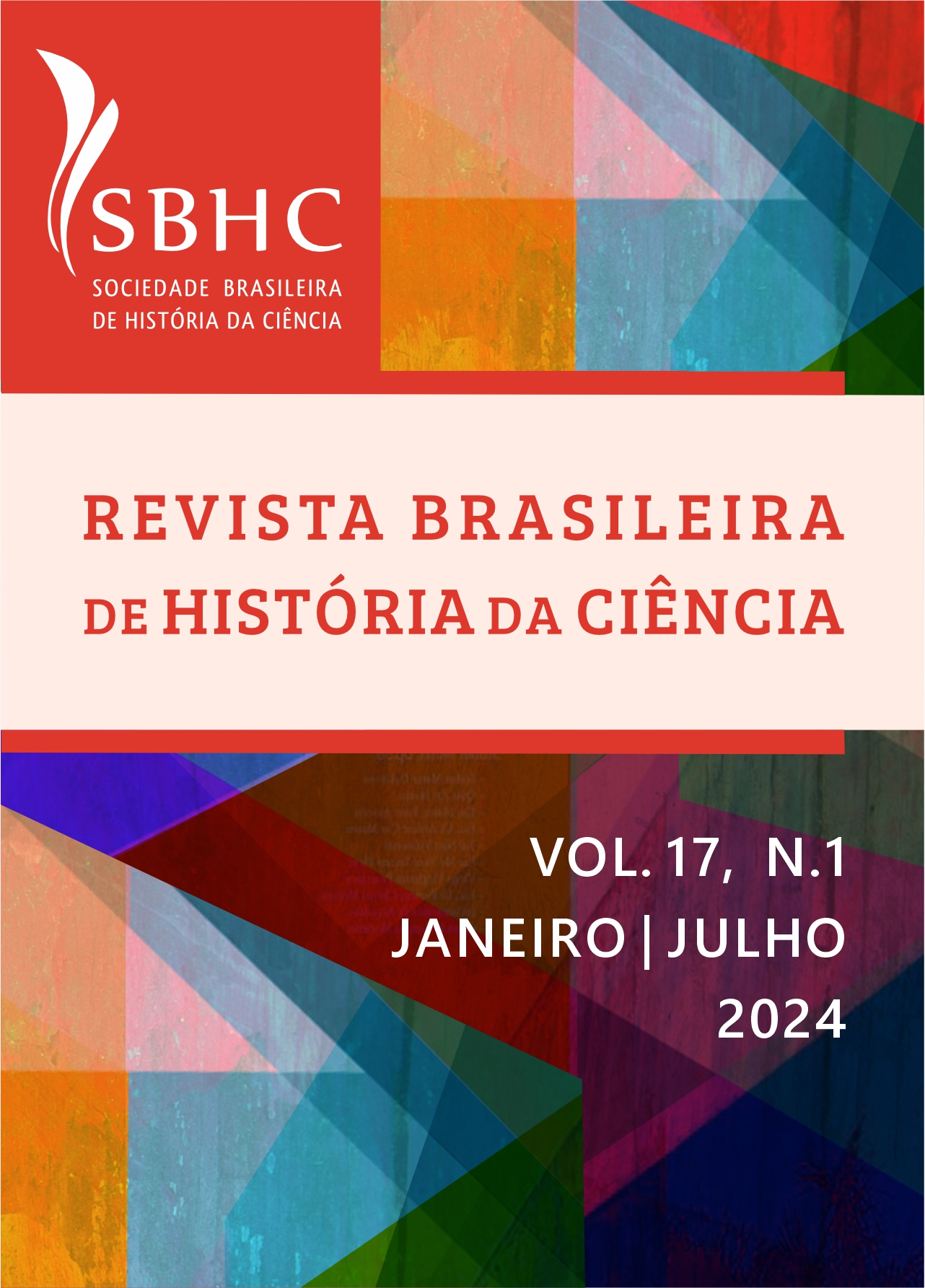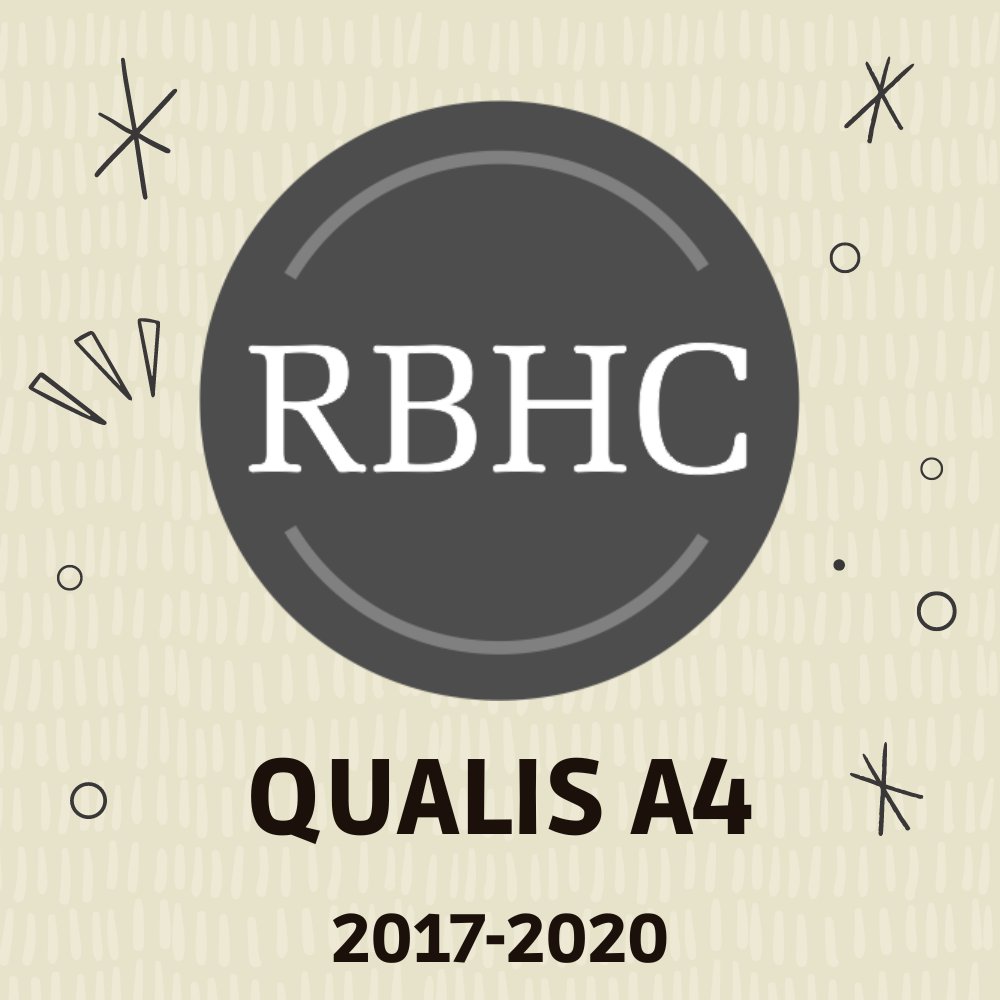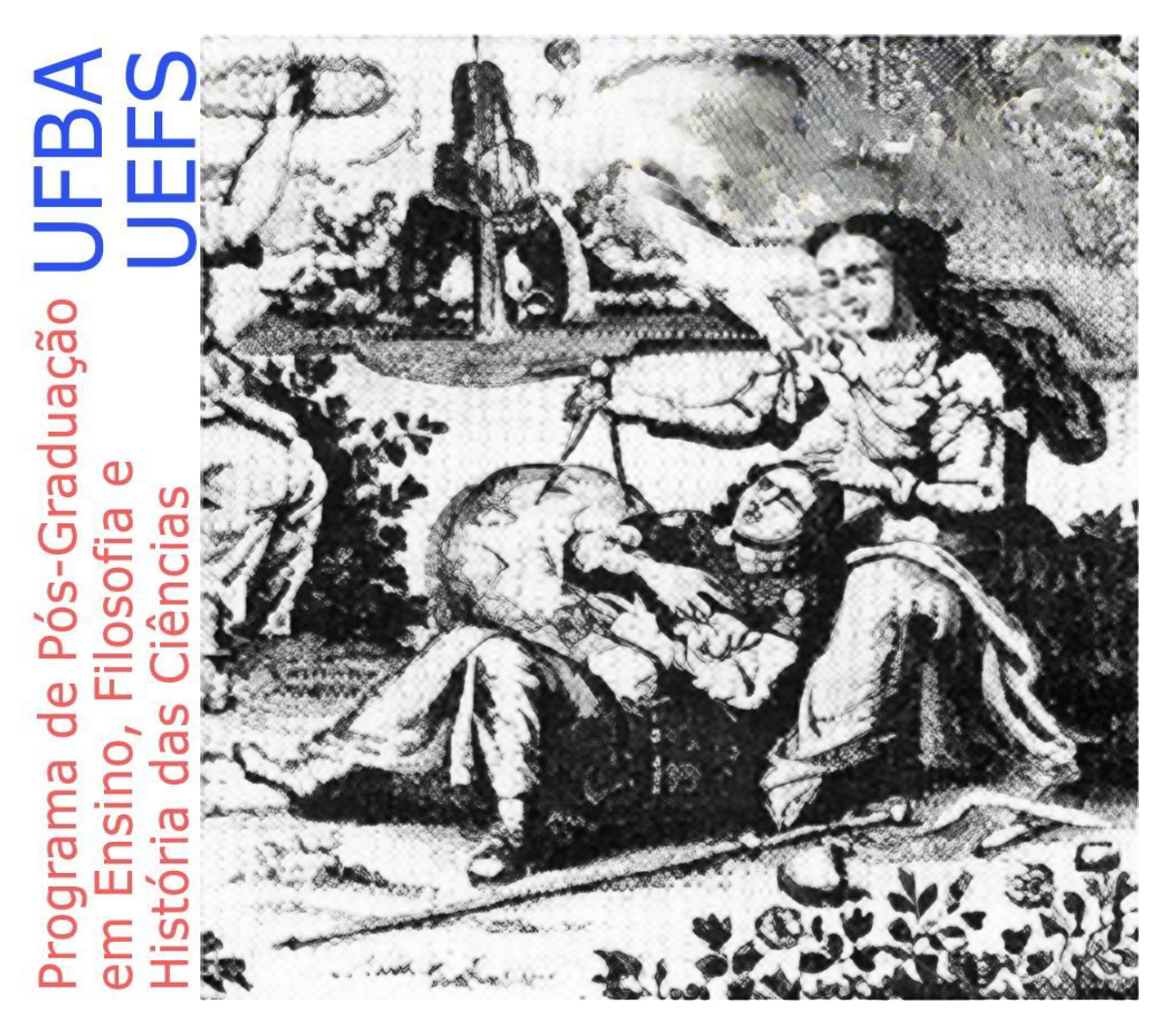The origins of scientific cosmology
a Lakatosian rational reconstruction
DOI:
https://doi.org/10.53727/rbhc.v17i1.947Keywords:
cosmology , Lakatos , Einstein , Friedmann and Lemaître , universeAbstract
The present article fits into an existing tradition of case studies on the epistemology of Imre Lakatos. Its objective is to describe a rational reconstruction of scientific cosmology, whose scientific status was consolidated after the first half of the 20th century, in a combination of theoretical and empirical works. Lakatosian criteria do not allow us to classify the conception of the Universe formulated by Albert Einstein as a Research Program. We can classify it, however, as an attempt at a program, which will be largely recovered by the contributions of Friedman, Lemaître and Hubble. We argue throughout this essay that 20th century cosmology can be described in terms of the conception of the Friedman-Lemaître Research Program, since we identify in both contributions the presence of the same core of fundamental theses and axioms, which will be preserved in later works, such as the big bang model and the steady state model.
Downloads
References
ABBE, C. On the distribution of the nebulae in space. Monthly Notices of the Royal Astronomical Society, v. 27, n. 7, p. 257-264, 1867. DOI: https://doi.org/10.1093/mnras/27.7.257a. DOI: https://doi.org/10.1093/mnras/27.7.257a
ALPHER, R.; HERMAN, R. Remarks on the evolution of the expanding universe. Physical Review, v. 75, p. 1089-1095, 1949. DOI: https://doi.org/10.1103/PhysRev.75.1089
BAGDONAS, A. Discutindo a natureza da ciência a partir de episódios da história da cosmologia. Dissertação (Mestrado em Ensino de Física) – Programa Interunidades em Ensino de Ciências, Universidade de São Paulo, São Paulo, 2011.
BAGDONAS, A.; SILVA NETO, C.P. da. O papel epistêmico da diversidade e as origens metafísicas da teoria do big bang: reflexões para a educação científica. Ciência & Educação, v. 29, e23029, 2023. DOI: https://doi.org/10.1590/1516-731320230029. Acesso em: 30 abr. 2024. DOI: https://doi.org/10.1590/1516-731320230029
BEZERRA, V.A. “Schola quantorum”: progresso, racionalidade e inconsistência na antiga teoria atômica. Parte II: crítica à leitura lakatosiana. Scientiae Studia, v. 2, n. 2, 2004.
BONDI, H.; GOLD, T. The steady-state theory of the expanding universe. Royal Astronomical Society, v. 108, n. 3, p. 252-270, 1948. DOI: https://doi.org/10.1093/mnras/108.3.252 DOI: https://doi.org/10.1093/mnras/108.3.252
CHIAPPIN, J.R.N. Racionalidade, decisão, solução de problemas e o programa racionalista. Ciência e Filosofia, v. 5, p. 155-219, 1996. DOI: https://doi.org/10.11606/issn.2447-9799.cienciaefilosofi.1996.105315
COHEN, B.; WESTFALL, R. Newton: textos, antecedentes e comentários. Rio de Janeiro: Contraponto, 2002.
EINSTEIN, A. Kosmologische Betrachtungen zur allgemeinen Relativitätstheorie [Considerações cosmológicas sobre a teoria da relatividade geral]. Sitzungsberichte der Königlich Preussischen Akademie der Wissenschaften, p. 142-152, 1917.
EINSTEIN, A. Teoria da relatividade geral e especial. Rio de Janeiro: Contraponto, 2007.
FRIEDMANN, A. On the curvature of space. General Relativity and Gravitation, v. 31, n. 12, p. 1991-2000, [1922] 1999. (Originalmente publicado como Über die Krümmung des Raumes. Zeitschrift für Physik, v. 10, p. 377-386, 1922) DOI: https://doi.org/10.1007/BF01332580
GAMOW, G. Expanding universe and the origin of elements. Physical Review, v. 70, p. 572-573, 1946. DOI: https://doi.org/10.1103/PhysRev.70.572.2. DOI: https://doi.org/10.1103/PhysRev.70.572.2
GAMOW, G. My world line. New York: The Viking Press. 1970.
HARRISON, E.R. Cosmology: The science of the universe. Cambridge: Cambridge University Press, 1981.
HOYLE, F. A new model for the expanding universe. Monthly Notices of the Royal Astronomical Society, v. 108, n. 5, p. 372-382, 1948. DOI: https://doi.org/10.1093/mnras/108.5.372
HUBBLE, E.; HUMASON, M. The velocity-distance relation among extra-galactic nebulae. Astrophysical Journal, v. 74, p. 43, 1931. DOI: https://doi.org/10.1086/143323
KING, H.C. The history of the telescope. New York: Dover, 1979.
KRAGH, H. Cosmology and controversy: The historical development of two theories of the universe. Princeton: Princeton University Press, 1996. DOI: https://doi.org/10.1515/9780691227719
KRAGH, H. Cosmology and the origin of the universe: Historical and conceptual perspectives. [preprint]. Disponível em: https://arxiv.org/abs/1706.00726v1. Submetido em: 2 jun. 2017. Acesso em: 30 abr. 2024.
LAKATOS, I.; MUSGRAVE, A. A crítica e o desenvolvimento do conhecimento. Tradução de O.M. Cajado e P.R. Mariconda. São Paulo: Cultrix; Edusp, [1965] 1979. DOI: https://doi.org/10.11606/issn.2447-9799.cienciaefilosofi.1980.107354
LAKATOS, I. History of science and its rational reconstructions. Proceedings of the Biennial Meeting of the Philosophy of Science Association, v. 1970, p. 91-136, 1970. DOI: https://doi.org/10.1086/psaprocbienmeetp.1970.495757
LAKATOS, I; ZAHAR, E. Why did Copernicus's research programme supersede Ptolemy's? In: Worrall, J.; Currie, G. (eds.). The methodology of scientific research programmes. Cambridge: Cambridge University Press, 1978. p. 168-192. (Philosophical Papers, v. 1). DOI:10.1017/CBO9780511621123.006. DOI: https://doi.org/10.1017/CBO9780511621123.006
LAUDAN, L. O progresso e seus problemas: rumo a uma teoria do crescimento científico. Tradução de Roberto Leal Ferreira. São Paulo: Editora Unesp, 2011.
LEMAÎTRE, G. A homogeneous universe of constant mass and increasing radius accounting for the radial velocity of extra-galactic nebulæ, Monthly Notices of the Royal Astronomical Society, v. 91, n. 5, p. 483-490, 1931. DOI: https://doi.org/10.1093/mnras/91.5.483. DOI: https://doi.org/10.1093/mnras/91.5.483
LIMA. J.A.S.; R.C., SANTOS. 100 anos da cosmologia relativística (1917-2017). Parte I: das origens à descoberta da expansão universal (1929). Revista Brasileira de Ensino de Física, v. 40, n. 1, e1313, 2017. DOI: https://doi.org/10.1590/1806-9126-rbef-2017-0196
MERRITT, D. Cosmology and convention. Studies in History and Philosophy of Modern Physics, v. 57, p. 41-52, 2017. DOI: https://doi.org/10.1016/j.shpsb.2016.12.002
MOULINES, C. O desenvolvimento moderno da filosofia da ciência (1890-2000). São Paulo: Associação Filosófica Scientiæ Studia, 2020.
PONTY, J. M. Cosmologia del siglo XX. Barcelona: Gredos, 1971.
PONTY, J. M.; MORANDO, B. The rebirth of cosmology. New York: Knopf, 1976.
PROCTOR, R. Note on the Sun’s motion in Space and on the relative distances of the fixed stars of various magnitudes. Monthly Notices of the Royal Astronomical Society, v. 30, p. 9-20, 1869. DOI: https://doi.org/10.1093/mnras/30.1.9
RODRIGUES, D.M. O eclipse de Sobral em 1919: breve análise sobre a proposta epistemológica de Larry Laudan. Revista Paranaense de Filosofia, v. 1, n. 2, p. 111-128, 2021. DOI: https://doi.org/10.33871/27639657.2021.1.2.5914
RODRIGUES, D.M. As origens da cosmologia científica: uma reconstrução racional. Dissertação (Mestrado em Filosofia) – Faculdade de Filosofia, Letras e Ciências Humanas, Universidade de São Paulo, São Paulo, 2023.
RYDEN, B. Introduction to cosmology. Cambridge: Cambridge University Press, 2016. DOI: https://doi.org/10.1017/9781316651087
SLIPHER, V. Nebulae. Proceedings of the American Philosophical Society, v. LVI, n. 5, 1917.
SOARES, D. O universo estático de Einstein. Revista Brasileira de Ensino de Física, v. 34, n. 1, 2012. DOI: https://doi.org/10.1590/S1806-11172012000100002
ZAHAR, E. Why did Einstein’s programme supersede Lorentz’s? The British Journal for the Philosophy of Science, v. 24, n. 2, p. 95-123, 1973. DOI: https://doi.org/10.1093/bjps/24.2.95
Recebido em outubro de 2023
Aceito em novembro de 2023
Downloads
Published
Issue
Section
License
Copyright (c) 2024 Danilo Rodrigues, Dr. Chiappin

This work is licensed under a Creative Commons Attribution-NonCommercial-NoDerivatives 4.0 International License.



















